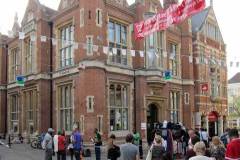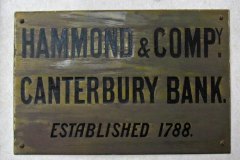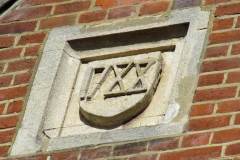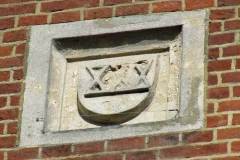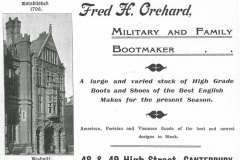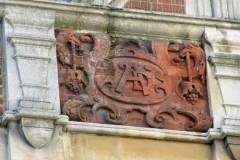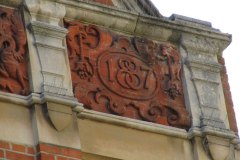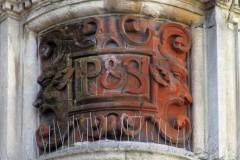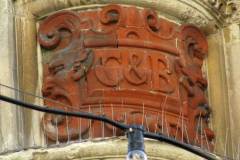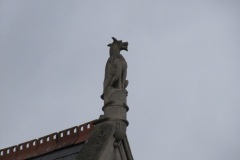Two Red Brick Banks at 48 & 49 High Street
The corner site between High Street and St Margaret’s Street (in fact 49 High Street), rebuilt in 1887, has been a Lloyds bank since 1918 (Image 1). Before this it traded as Capital and Counties Bank, which in turn had taken over the Canterbury Bank in 1903. It is a grand, two storey, red brick, gothic structure, designed by John Green Hall, a local architect (very local as his office was in St Margaret’s Street) whose other Canterbury work included St Thomas’ Catholic church in Burgate, the Congregational church in Guildhall Street and the Masonic Hall. The design ‘turns’ the corner neatly with an octagonal tower – it was supposedly based on the style of the Nonington mansion home of William Hammond, one of the bank directors.
What to see:
- the Hammond & Company plaque just inside the front door ( Image 2) – Hammond joined the bank in 1800 on the death of Henry Gipps
- the foundation date 1788 in a small gable high above St Margaret’s Street (Image 3)
- a second stone nearby (Image 4) which is not easy to read but must surely have been ‘1888’ as this is its apparent construction date
Immediately next door (48 High Street) we find a three story brick and stone building with elaborate terracotta panels, built in 1887 for Pool & Son, later run by Fred H Orchard, a firm of ‘Military and Family Bootmakers’ (Image 5). It is now a branch of Santander Bank.
What to see:
- the high, split, date stones with ‘AD’ on the left and ‘1887’ on the right (Images 6 and 7)
- more lettering above the oriel window – ‘P&S’ denotes Pool and Son, whilst ‘C&B’ stands for the architects, Cowell & Bromley (Images 8 and 9)
- the griffin standing high on the gable end overlooking the High Street (Image 10)
Sources: Cantacuzino (1970); Evans (1903); Pike (2008); and Machadoink web site

